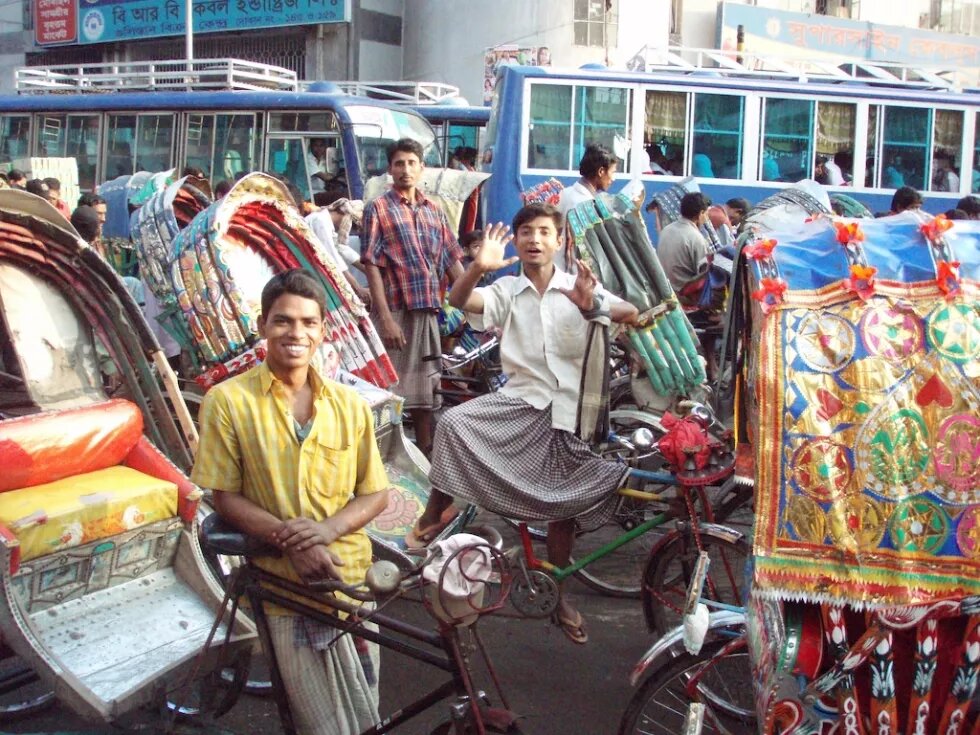
Bangladesh is one of the World’s most densely populated countries with a total population of around 170 million. Bangladesh had its first case of COVID-19 reported on 7 March 2020. The spread of infections saw a steep rise in April. As of May 1, there are a total of 8238 confirmed cases, and 170 deaths in the country (IEDCR). Experts have warned that the number of test conducted is largely insufficient, which may lead to a humanitarian crisis in terms of public health.

On 22 March, Bangladesh declared a 10-day shut down effective from 26 March to 4 April. This was later extended to 5 May. Lockdown measures in Bangladesh (though flexible in nature) have largely exposed the deeply embedded economic and social inequality of the society. The already vulnerable living conditions of the informal sector workers have massively deteriorated during the lockdown period. The lack of institutional capacity of the state, along with the lack of social safety nets for low-income communities have made the situation even worse.
We have observed lately that the measures of an aggressive lockdown model even with a high economic cost associated with it, are perceived to be reasonably acceptable in the high-income societies. However, the low-income countries like Bangladesh are structurally dissimilar in terms of demographic and socio-economic composition. As a large number of people in these countries are associated with the informal sector, operating on daily wages; experts have previously warned that a Western style ‘lockdown’ model with no supplementary emergency food relief efforts from the government could cause widespread hunger and malnutrition, ultimately leading to an exponential spread of the virus.
The collapse of the informal sector
In Bangladesh, as much as 86 percent of the workforce depends on the informal sector activities primarily operating under daily contracts, sub-contracts or sometimes with no contract (BBS, 2018).These ‘informal’ economic activities are casual, unskilled, low income, seasonal, and largely fluctuating, with no fixed working hours. A large number of workers in Dhaka city, either stay in informal settlements, make shift slums, construction sites, or other worksites which expose them to a number of health hazards also during non-corona times. Many sleep in public places, parks, streets and sidewalks, and their vulnerability is worsened by the hostile treatment of urban authorities. The capacity of informal sector workers to adjust to lockdown measures is severely constrained due to already existing conditions of vulnerability associated with their legal, economic, and social status based on the usual characteristics of the informal sector employment which assures no guaranteed protection in case of sudden termination.
Migrant Workers (construction/garments/domestic)
It is estimated that more than 3.5 million workers in Bangladesh work in the construction sector including the carpenters, technicians, electricians, machine operators, and shutter workers (BBS, 2018). As most construction workers in the capital city work under a temporary sub-contract basis, they lack formal appointment records. Mojibor, a 28 year old construction worker living in a construction site in Dhanmondi (an affluent segment of the city) reveals that the contractor asked as many as 60 of them (residing in the same site) to go back to their homes right after the shutdown was announced. None of them received full payment for the month of March. According to Mojibor, almost all workers residing in that particular site are migrant workers who shifted to the city in recent months. As they were given a place to stay on site, and had no other place to go, the only choice left for them was to move back to their respective villages. As daily wage workers, often with no savings, they ended up spending the little money they had on their desperate plight to reach home.
Meanwhile, the other migrant workers (mostly, female garments workers) chose to leave the city after the government’s announcement of a 20 days shutdown. Due to the limited number of vehicles and restrictions placed on transportation, these workers had no other choice but to put themselves at risk of contracting the virus as they were exposed to massive crowds and crowded buses on their journey back home. The rest who decided to stay back ran out of money in a week or so, and were forced to come out to streets to look for food. Either way, this population was exposed. The workers who managed to return home following the shutdown announcement, were being viewed as the ‘carrier of Corona’ in their own hometowns. A recent report revealed that Narayanganj has seen a steep rise of COVID-19 cases after a large number of female textile workers returned to their hometowns. This particular situation has also led to widespread stigma against the returned workers.
Thousands of female domestic workers in Dhaka as well lost their employment during the crisis. Most gated communities or building authorities have prohibited domestic workers from entering these establishments. Some have received payments for the full month, others have not. No one had an idea when they would be able to start working again. Large numbers of them are seen to be searching for food on the streets of Dhaka.
Retail and Wholesale
Around 8.6 million people are working in both the retail and wholesale sectors in Bangladesh (BBS, 2018). Many of these workers work in the small local stores, motor repair shops, and roadside tea stalls. A large number of them also work as street vendors or vegetable/fruit sellers. Hundreds of vendors in Dhaka run shops outside permanent structures, and carry their commodities in small hand carts. Abdul Karim, a 45 year old door-mat seller, broke into tears when asked about his loss of income during the lockdown period in the Mirpur (a densely populated area in Dhaka). He revealed that as many as 5 people are dependent on his income and he currently has no money left to buy food. In his words, “we have been eating only boiled potatoes for the last 5 days. My children are hungry. I never begged in life, but now I am left with no other choice but to beg.”
The several street vendors whom I have managed to talk to during the lockdown period in Dhanmondi revealed similar realities. Most seemed angry as they felt completely left out. Many felt that a hurried plan for a ‘lockdown’ should have been followed by a proper scheme of relief programs for the informal workers.
Transport and Agriculture
It is important to note that an estimated 5.2 million workers are employed in the transport sector which includes drivers and helpers working in nearly 2 hundred thousand buses, trucks, minibuses, pick up vans, ambulances, and other different categories of human haulers. The lockdown announcement not only led to the loss of income for the transport workers, the stagnation in transportation has also caused a tragic collapse of the food supply chain. Firstly, farmers are unable to transport their grown vegetables to the wholesale market. Taking advantage of the transport crisis, a type of syndicate has quickly been formed with the intention of purchasing vegetables and other food grains from the farmers at a very low cost. Meanwhile, local administrations have shown little commitment or capacity to keep the local supply chain functional. As a result, a massive amount of seasonal vegetables remain unsold in the villages. While farmers have fallen into deep distress with their seasonal produce rotting in the field, the price of vegetable skyrocketed in the capital city. Meanwhile, the already distressed low income portion of the city population has been struggling to put up with the high price of food.
Recovery and Reality
The government has declared several financial recovery packages to tackle the resulting economic crisis. A $5 billion dollar loan package is announced for the export oriented industries (including garments, shrimp, and leather) at a subsidized interest rate, while the agricultural sector has been majorly neglected (Daily Star, 2020). The informal sector employees are promised to be given a direct cash benefit of $90 million (New Age, 2020) which is clearly not sufficient for the 50 million people who have been directly affected by the crisis. Even if the packages were rightly disbursed to the affected ones, each family is expected to receive a mere 3 dollar from the package. This is perhaps a classic example of the state’s sheer lack of commitment and accountability to the working class.
COVID-19 has revealed a number of important realities in Bangladesh. Firstly, a decade of high economic growth has largely failed to distribute its benefits among the majority of the population. The chaos in the health sector and the insufficiency of existing social safety nets have exposed the lack of institutional capacity of the regime which has exclusively focused on the construction of highly expensive mega infrastructure development projects for more than a decade. It is clear that only a small section of the society in Bangladesh can afford to remain at home, while millions are left with no other choice but to search for food on the streets, exposing themselves to further risks of infection.
While the health sector is struggling to keep up with the spiraling number of cases, loss of income and lack of access to food has compelled thousands of informal sector workers in the country to defy lockdown measures, leading to potentially rapid transmission of the virus. In other words, high levels of social inequality and an absence of social safety nets have made a ‘Western style lockdown model’ disproportionately hazardous to most Bangladeshis.
References:
1. (BBS) Bangladesh Bureau of Statistics. Labor Force Survey, Bangladesh 2016-2017. Ministry of Planning. 2018.
2. Daily Bonikbarta. Kormohin Pray dui KotiBekar (Around 20 million without work). March 31, 2020.
3. Daily Star. PM unveils Tk 72,750cr package to address the impact of corona virus. April 5, 2020.
4. (IEDCR) Institute of Epidemiology, Disease Control and Research. Government of Bangladesh.
5. New Age. Tk 760cr cash incentive for jobless informal workers: PM. April 13, 2020.
* The author is a researcher and activist. Due to the on-going crackdown in Bangladesh on COVID-19 related critical media coverage by means of the Digital Security Act, the identity of the author has to be kept anonymous. Reference: <https://rsf.org/en/news/bangladeshi-journalists-cartoonist-arrested-covid-19-coverage >
This article is published by Heinrich-Böll-Stiftung Southeast Asia and NGO Forum on ADB
The NGO Forum on ADB is a network of civil society organizations (CSOs) that has been monitoring the projects, programs, and policies of the Asian Development Bank (ADB) and the Asian Infrastructure Investment Bank (AIIB) with membership spans Asia and the Pacific regions.
This article is a part of Web-Dossier: COVID-19 and Southeast Asia
